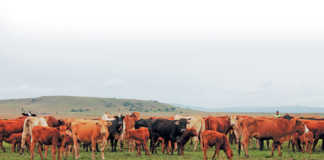
The vast majority of South Africans are meat eaters; the vegan movement has not yet become mainstream here. However, consumers are being pushed towards non-animal foods by various entities.
The annual Veganuary campaign tries to encourage more people to eat exclusively non-animal products during January. Globally, the campaign has grown fast, but in South Africa only 14 000 people signed up for it in 2020.
A survey conducted among the people who signed up in 2019 shows that animal rights are the main reason for their commitment, followed by health and environmental concerns.
Animal rights activists exploit consumers’ concerns about the welfare of animals.
Organisations such as People for the Ethical Treatment of Animals recently targeted schoolchildren with a campaign that alleged that drinking milk would make them obese.
Misinformation about the perceived health benefits of non-animal food products are used to entice consumers away from animal products. Yet most nutritional guidelines recommend that we eat a variety of food products. Even vegan websites warn against vitamin deficiencies in vegan diets and recommend various supplements.
The environment
The anti-animal farming lobbies also highlight the perceived environmental impact of livestock production and allege that the livestock sector is a major source of greenhouse gases.
Since scientists have put the impact of the livestock system into perspective and shown that the earlier estimates of livestock’s impact were highly exaggerated, the anti-animal farming group has found a new ally in scientists arguing that livestock’s nitrogen footprint is high.
While it is true that nitrogen oxide is a far more problematic greenhouse gas than carbon dioxide, animal scientists need to put livestock’s nitrous oxide footprint into perspective.
The main producer of the gas remains the manufacturing sector.
The dairy industry has been particularly hard hit by imitation products, with imitation cheese and various non-dairy beverages being freely available.
While the imitation products clearly marked as such are a major threat to the industry, the use of cheaper, non-animal fats and protein in other products is probably a greater problem. Despite this, it has not yet been addressed by the dairy industry.
Food processors are quietly encouraging the trend towards imitation products because they can make more money from manufactured products than from basic food products. New technology, such as 3-D printing, will also lead to more imitation food products being produced.
Anti-animal farming lobbies find and use cases of perceived animal cruelty to
promote their cause. Farmers must thus make doubly sure to treat animals with care, and their organisations should be able to prove that they do so. Strict adherence to proper animal handling and care protocols will help reduce criticism from animal rights activists.
The facts
The real story about livestock’s environmental impact is well known to farmers and agricultural journalists. Unfortunately, the general press, and especially the self-styled environmental journalists, are still uncritically regurgitating anti-animal farming propaganda.
Organised agriculture has a huge job to inform these people of the facts.
The vegan movement will continue to grow and demand non-animal food products.
It is important that agricultural industries ensure that these products are not labelled as ‘livestock’.
This will need action on a local and global scale within intergovernmental organisations, such as the Codex Alimentarius Commission, which sets food standards worldwide.











